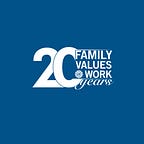Paid Leave and Early Education Go Hand-in-Hand
To mark the 50th “Week of the Young Child” hosted by the National Association for the Education of Young Children, we talked to Gladys Jones, a childcare provider, about how the pandemic has impacted her industry, and the role paid leave plays in her business.
Offering paid leave to her employees was a no-brainer for Gladys Jones. Gladys is the owner and operator of GA GA Group Family Daycare LLC, a home-based early childhood education center located in Staten Island, New York.
“[Staff] need time for their families [and] themselves,” Gladys said of her decision to offer paid leave. “It’s logical: People will need to take time out, especially during the pandemic. Families get sick. They can’t go into work like that.”
Childcare is one of the largest modalities of care nationwide. Historically it is also one of the most underfunded. But the passage of President Biden’s American Rescue Plan (ARP) is providing a significant investment in the nation’s care infrastructure. The ARP includes a total of nearly $40 billion to stabilize the childcare sector and support families.
The influx of money will provide new resources for existing providers to continue to serve children and families. Identifying resources, influencing policy, and creating a network of support for childcare providers propelled Gladys, and her colleague, Doris Irizarry — another veteran childcare provider — to found ECE on the Move two years ago.
“[We] were tired of the lack of respect and representation we were seeing in politics and policies that affected our industry,” Gladys said. “We had approximately 600 providers [as members of ECE on the Move], pre-pandemic. Many providers have left — more than 50 programs have closed [as a result of the pandemic].”
Her organization isn’t the only one to see childcare center closings. According to the Bureau of Labor Statistics, nearly 170,000 fewer people were working in childcare in December 2020 than had been in December 2019. And the National Association for the Education of Young Children found that, of the centers that remain open, 81 percent enroll fewer kids today than they did before the coronavirus outbreak. Gladys’ daycare program remains open, but has no enrollment since her clientele — who are primarily minimum-wage earners who pay for childcare via subsidy — are home with their children due to the pandemic.
The pandemic has only intensified the need for groups like Gladys’. Since the coronavirus began to spread nationwide, the group has not only offered support to its members, but it has ensured that they all are up-to-date on new policy initiatives and program changes. They send out information for childcare providers released federally or by the state in multiple languages, helping to keep the membership informed. And they create grievance forms and train members on how to use them, to get issues resolved at the many state and federal agencies impacting childcare.
